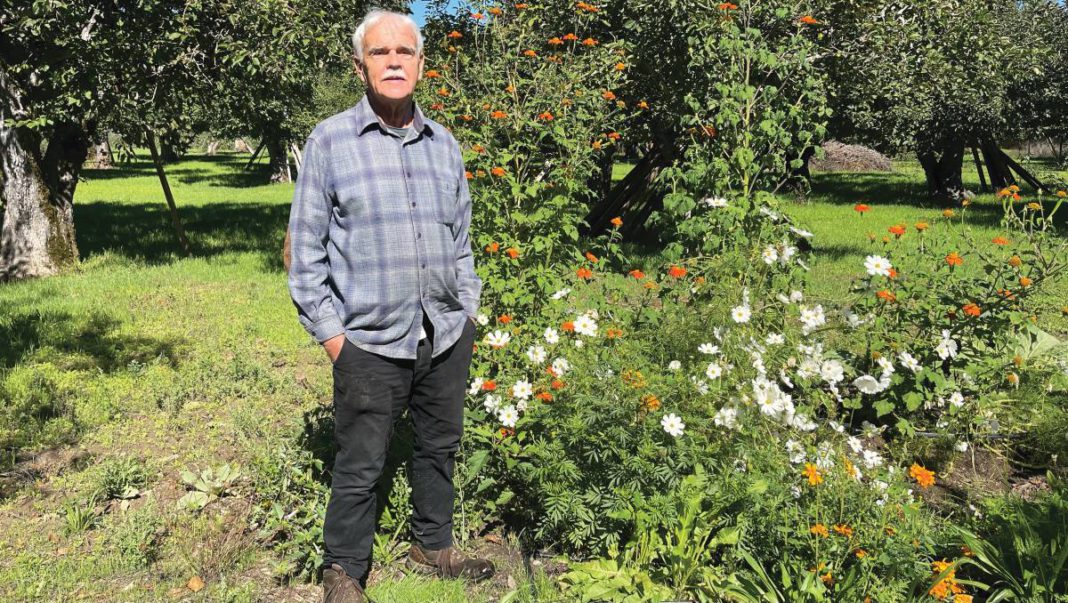This is a bridge. Just three weeks ago, I wrote a cover story on the general decline and collapse of North American butterfly populations within the greater context of the current global mass extinction (“Another Silent Spring,” Oct. 3 Bohemian and Pacific Sun).
This week, I present a rainbow ray of hope in connecting readers with just one of the groups fighting for butterfly survival amidst the general “insect apocalypse”—The Hallberg Butterfly Gardens in Sebastopol. The butterfly gardens that Louise Hallberg established at her family apple farm survive her, as a regional model of what can be achieved for the butterfly in long developed and agricultural areas.
While butterfly gardening—a variety of “pollinator” or “habitat” gardening and landscaping—is lower on the conservation wishlist than more contiguous wild parks, the abatement of invasive species and stopping the wholesale use of pesticides in favor of organic management, it is important, and something we are empowered to do now, this rainy planting season.
Louise Hallberg’s old friend, Hallberg president and butterfly fancier Donald Mahoney, toured me around the classic 1910 farm house (replete with square turret and tumble down barn). Around it, some 30-40 species of butterfly “nectaring” or “host” plants have been planted and tended. Their reward for this work is a historic record of 55 butterfly species sited.
An aspect of the butterfly gardens I will share is that while beautiful and thoughtfully tended, they are not tidy, but instead semi-wild. There are no leaf rakes in wild nature, and dead trees are handled not by chainsaws but by bugs and bacteria, moss and fungi. This dead matter is essential to the lifecycle of insects. In compensation for this, the Hallberg butterfly gardens are one of the most magically alive gardens I have ever been in. It seems that if one takes care of the butterflies and insects, the lizards and squirrels and foxes and birds will take care of themselves.
Cincinnatus Hibbard: Donald, you said that children lose their native love of insects as they enter the culture—which is strongly anti-bug. How do you bring them back into it?
Donald Mahoney: If you look at them closely, each one is a living work of art.
These butterfly gardens are long established with many habit echoing features. How do folks get started?
Louise [Hallberg] would say, “Get a good butterfly book and plant a buddleja.” Buddleja bloom in the summer and will attract any butterfly within five blocks of your house. Look up what butterfly species show up to nectar in your butterfly book, then plant what larvae [host] plants that butterfly uses. Then you have a beginning.
Recommend a butterfly book?
I like Art Shapiro’s Butterflies of the Bay Area.
Any other general advice?
You need to have plants that bloom in spring, winter and fall. Ceanothus for the spring, then after that wild flowers take over. In the summer, buckwheat and toyon; in the fall, native asters and goldenrod. Also, plant milkweed for monarchs. And don’t spray pesticides or buy commercial plants that have been pre-treated with pesticides. If a butterfly nectars on a treated flower, it will likely die.
Learn more: The Hallberg Butterfly Gardens are open for tours, lectures and butterfly plant sales by appointment from April through October. Contact in**@**********************ns.org or 707.823.3420. Garden volunteers and donations are welcome all year. The staff urges monarch lovers to participate in the official count for the now endangered Western monarch butterfly, organized in conjunction with the Xerces Butterfly Society. Submit butterfly sighting photos to inaturalist.org.








